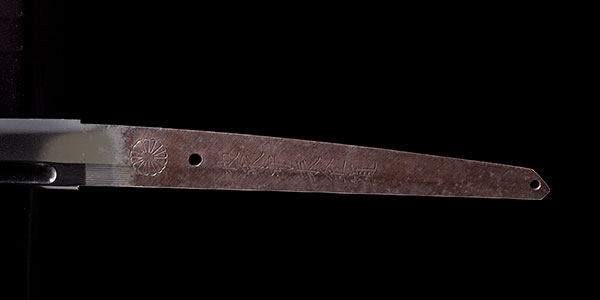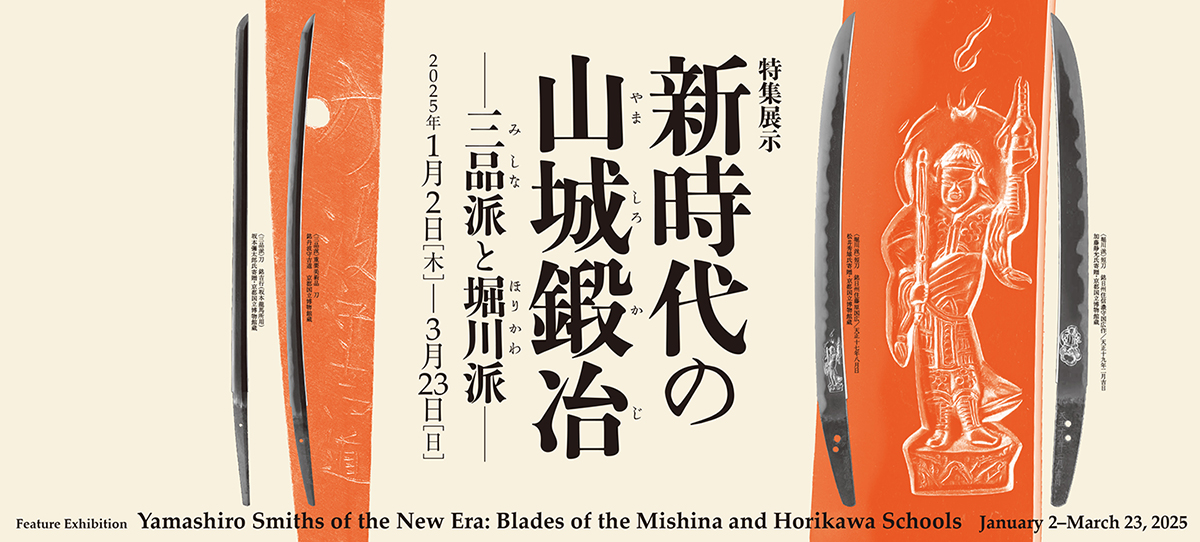- TOP
- Exhibitions
- Feature Exhibitions
- Feature Exhibition Yamashiro Smiths of the New Era: Blades of the Mishina and Horikawa Schools
General Information
- Exhibition Title
-
Feature Exhibition
Yamashiro Smiths of the New Era: Blades of the Mishina and Horikawa Schools
- Period
-
January 2–March 23, 2025
- Venue
-
Heisei Chishinkan Wing, Galleries 1F-4, 6
- Closed
-
Mondays
*The museum will be open on Monday, January 13 and Monday, February 24, 2025; the museum will be closed Tuesday, January 14 and Tuesday, February 25, 2025.
- Museum Hours
-
9:30 a.m.–5:00 p.m. (Entrance until 4:30 p.m.)
Open until 8:00 p.m. on Fridays (Entrance until 7:30 p.m.)
- Admission
-
Adult 700 yen University Student
(ID required)350 yen - Admission fee includes admission to all galleries in the Heisei Chishinkan Wing.
- Admission is free for high school students and other youths age 0 – 17, seniors over 70, visitors with disabilities and one caretaker, and for Campus Members (including faculty). Please show ID.
- Admission for school groups: Admission to the Collection Galleries is free for elementary school, middle school, and high school students on school fieldtrips as well as teachers serving as their guides.
Description of Exhibition
Swords made prior to the Keichō era (1596–1615) are known as kotō (lit. “ancient swords”), which were followed by shintō (lit. “new swords”). Production of these new shintō blades emerged during the process of rebuilding Kyoto, which had been ravaged by various wars, and spread throughout the country, ultimately culminating in a new golden age of Japanese smithing.
This exhibition introduces blades by the luminary Mishina and Horikawa schools, each based in Yamashiro province (present-day Kyoto). These masterworks exemplify the elegance and dynamism of shintō swords.

Tachi (Slung Sword) Blade
Hairline chrysanthemum crest inscription:
"Izumi no Kami Rai Kanemichi/
Yōhō; Forged in duplicate by a Kyoto smith in Kyōhō 15 by order of the shogun.
One blade gifted; this is the other."
By Izumi no Kami Rai Kanemichi V
Kyoto National Museum







